On January 26, Major - Specialist Doctor 1 Than Van Hung, in charge of Deputy Head of the Burn - Plastic Microsurgery Department, Military Hospital 175 , said that patient T. suffered complex injuries, requiring a plan to cover the soft tissue defect and restore function early.
After taking a CTA (Computerized Tomography Angiography), it was discovered that patient T. had atherosclerosis and narrowing of blood vessels in the lower limbs, reducing blood flow to the damaged area. This made the option of transferring a vascularized skin flap from the calf difficult. In addition, the patient was old, so if performed, it would affect his health and recovery ability.
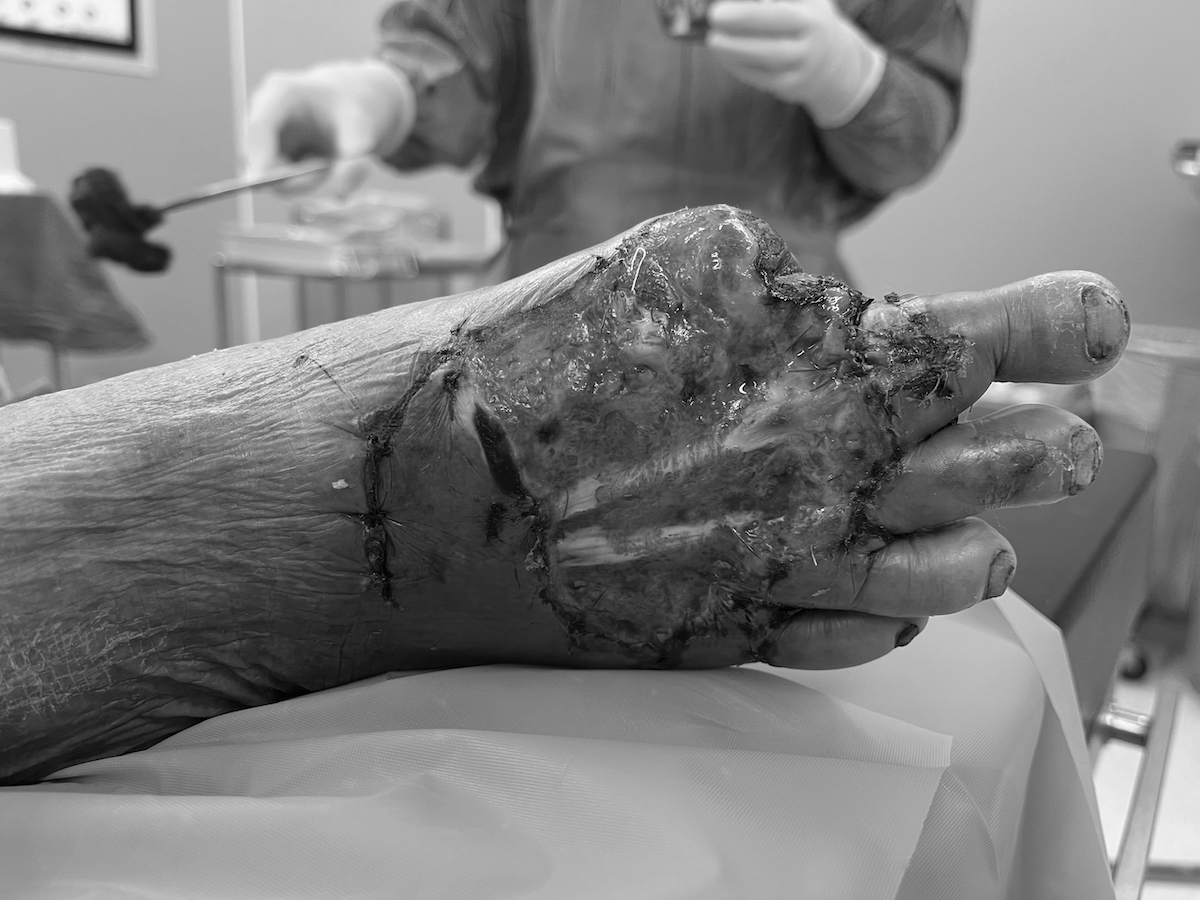
Patient's foot with multiple wounds and complete loss of skin on the instep
Recognizing this as a difficult case, however, with the desire to help the patient recover from the wound as soon as possible as well as ensure early mobility, the team of doctors decided to apply micro-plastic surgery techniques to cover the defect.
The surgery was performed by two teams led by Dr. Than Van Hung. One team will peel off the anterior thigh skin flap with a separate vascular pedicle, while the other team will prepare the recipient blood vessel source in the instep of the right foot, then suture the skin flap to the recipient vessel under a surgical microscope.
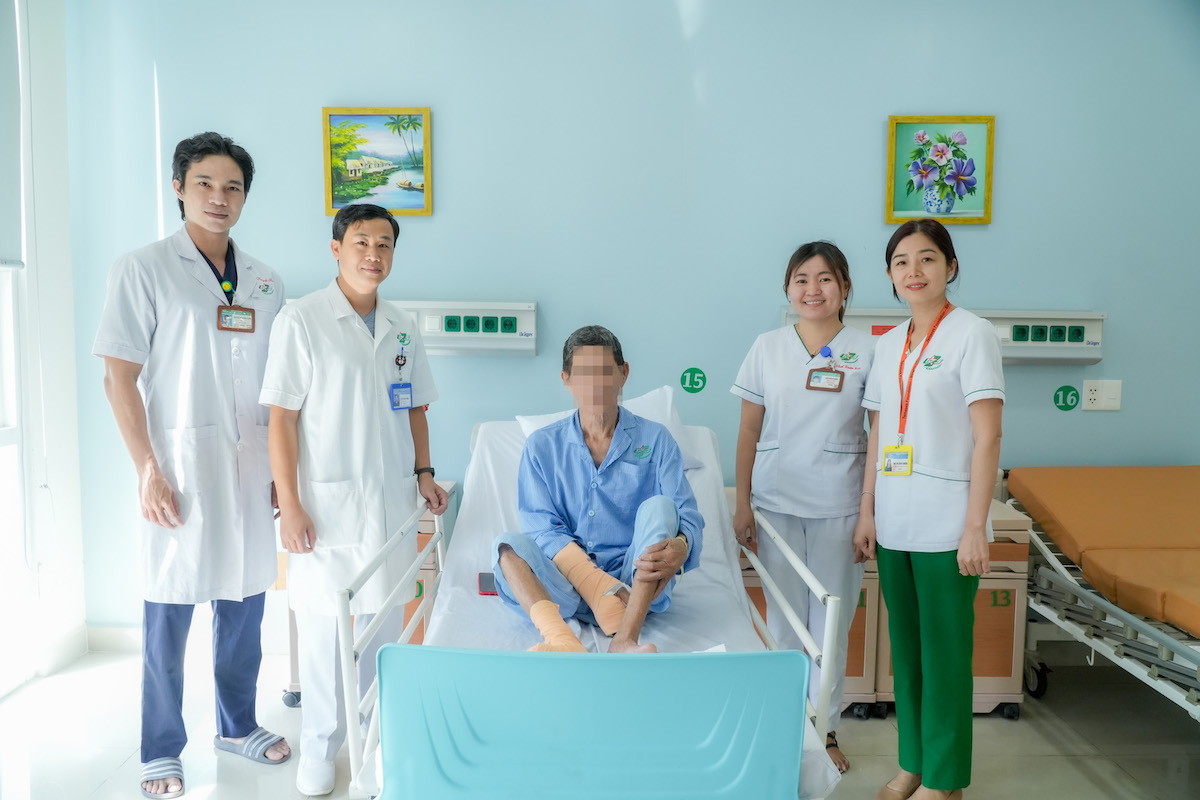
Patient recovering after microsurgery
After nearly 6 hours, the surgery was completed, the pink skin flap completely covered the wound. After 7 days of continuous monitoring, the patient was stable, the skin flap was alive, the surgical wound was clean and dry, the patient could move and walk easily. This proved the success of the complex surgery using microplastic surgery techniques.
Dr. Hung said that microsurgery is the highest technique on the plastic surgery ladder to treat soft tissue defects, using microscopes and specialized tools to restore small and microscopic structures such as blood vessels and nerves with diameters of less than 1 mm to several mm. This technique has become an effective treatment method for complex injuries, not only helping patients restore soft tissue defects, but also helping them restore function and aesthetics, improving quality of life.
Source link


![[Photo] Discover unique experiences at the first World Cultural Festival](https://vphoto.vietnam.vn/thumb/1200x675/vietnam/resource/IMAGE/2025/10/11/1760198064937_le-hoi-van-hoa-4199-3623-jpg.webp)


















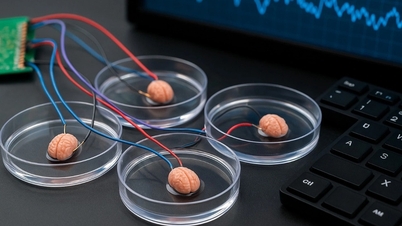





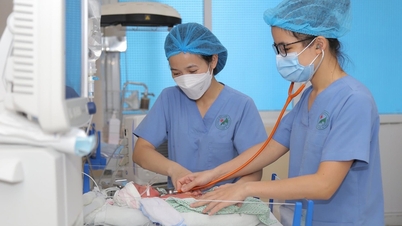






![[Photo] General Secretary attends the parade to celebrate the 80th anniversary of the founding of the Korean Workers' Party](https://vphoto.vietnam.vn/thumb/1200x675/vietnam/resource/IMAGE/2025/10/11/1760150039564_vna-potal-tong-bi-thu-du-le-duyet-binh-ky-niem-80-nam-thanh-lap-dang-lao-dong-trieu-tien-8331994-jpg.webp)






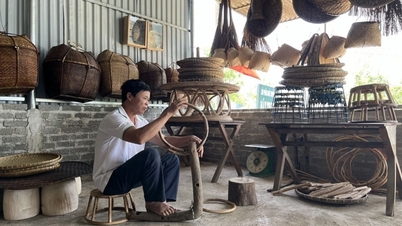






























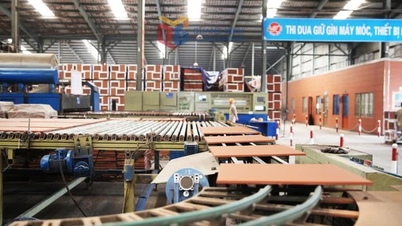


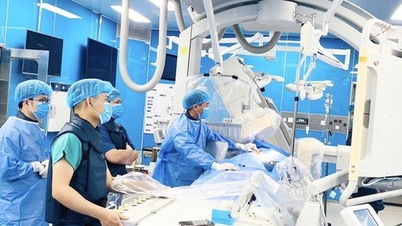



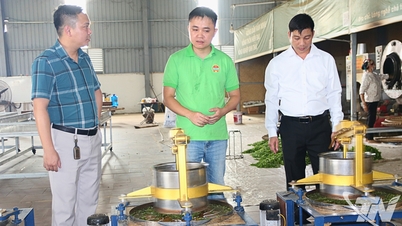



















Comment (0)